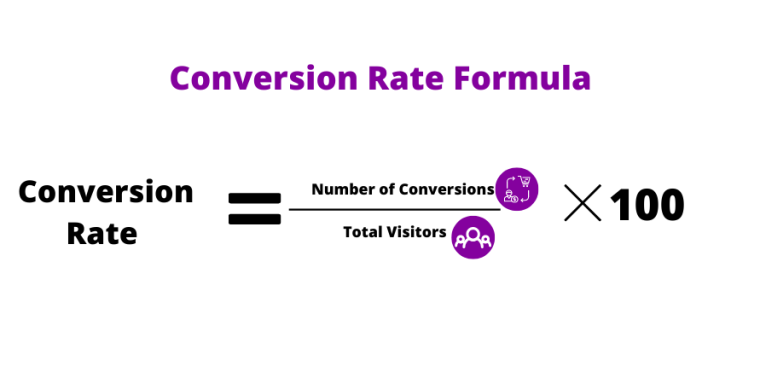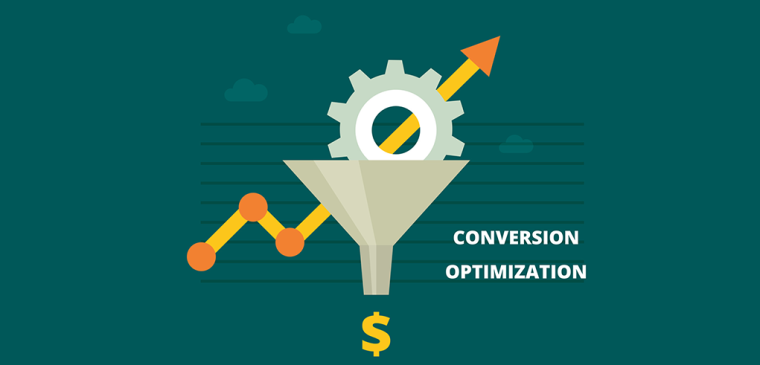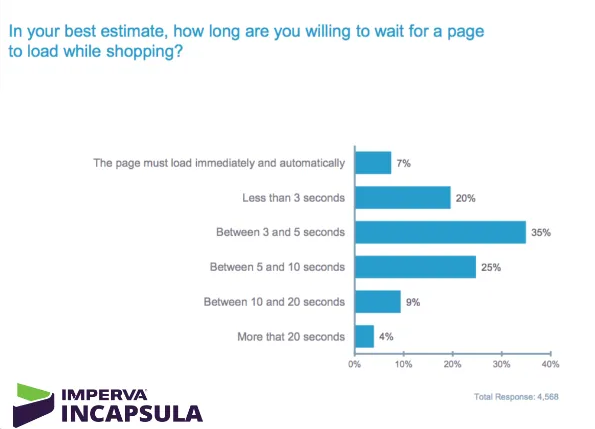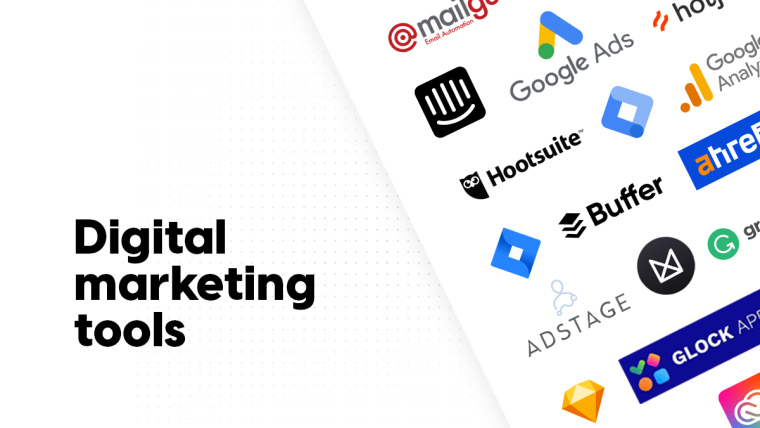Conversion rate optimization (or CRO) in marketing is the most important process for most online businesses. It allows you to improve the success of your efforts in advertising your business and making sales. As such, conversion rate optimization is an essential marketing strategy that will allow you to make the most out of your marketing efforts.
At the end of the day, having your business ranking high and getting a lot of traffic is helpful, but converting site visits into sales is what any business ultimately aims to achieve.
Conversion Rate Statistics:
- Email marketing is the most efficient medium for converting, with a 2.8% average conversion rate.
- The average website conversion rate is 2.35% across all industries.
- The highest conversion rate comes from Google Play, sitting at 30%.
- The industry with the lowest conversion rate is agencies, with only 1.7%.
- Premium advertising gets 50% more conversions than organic.
What Is Conversion Rate Optimization (CRO) in Marketing?
In marketing — especially online marketing — conversions are just how many people click your ad or visit your site and go through with an action beneficial to your business like a purchase, newsletter sign-up, or an app download. So conversion rate optimization is a strategy used to improve the percentage of total conversions and interactions to get more out of your marketing.
Conversions are obviously central to the goals of online businesses. Through them performing desired actions, you get to grow your business, make profits, and increase the adoption and usage of your website. You get users to do this through marketing, and CRO shows you how successful you are.
In this article, we will focus on explaining what conversion rate is, what are the benefits of CRO, and how to conclude whether your conversion rate needs to be optimized in the first place. We will also recommend several strategies for those who find that their conversion rate requires optimization, as well as some great marketing tools that could help in achieving this.
How to Calculate Conversion Rate
Let’s start at the beginning and explain what the conversion rate, itself, is. Simply put, the conversion rate is a metric that indicates the percentage of users who have completed a desired action on your platform. If you are in the retail business, the conversion rate shows how many of your site’s visitors have engaged in purchases of listed items. On blogs and similar websites, it shows how many users have subscribed to newsletters or supported your business in some other way, like maybe paying for a premium subscription.

It is calculated by dividing the total number of users who “convert” by the audience’s size. The figure is converted into a percentage, which is the conversion rate. For example, if you run a campaign with an audience of 20,000 people, and 800 people from that group click on your ad, you will divide 800 by 20,000 and get a figure of 0.04. This is a 4% conversion rate.
Obviously, the higher the conversion rate is, the better. If there are elements of the site that turn people away or don’t convert users well, conversion rate will reflect that. That is where conversion rate optimization, or CRO, comes in.
Benefits of Conversion Rate Optimization (CRO) in Marketing
If your conversion rate is too low, then optimization will help you raise the figures up. In doing so, you can expect to see a number of major benefits.
The end goal of CRO is to drive revenue simply by having more people decide to perform the desired actions on your platform but there are other benefits of the process.
The first of them is the improved customer experience. Generally, satisfied customers are always more likely to engage with your business through subscriptions and purchases and by spreading the word and driving more traffic toward your platform. Satisfied customers are also more likely to become longtime loyal customers.
CRO can also give you an advantage against competitors, who may have failed to optimize their own strategies and boost conversion rates. Furthermore, by increasing customer activity on the platform, you will also gain enhanced customer insight, as it will become more apparent from their actions where their interests lie. Specifically, you might notice an increase in purchases of specific products, while other products might see lesser engagement.
This could help you understand which products might require some sort of change or improvement or if there is simply no demand for them.
For all of these reasons, as well as many others, conversion rate optimization is highly beneficial and helpful to businesses that know how to perform it.
How to Know if Your Conversion Rate Needs Optimization
In order to know whether your conversion rate needs optimization, you must first calculate the conversion rate percentage, as explained earlier. From then on, you must determine if your conversion rate is “good.”
This can be a bit tricky, as conversion rates tend to change from one industry to another and even from one product to another in the same industry. The changes are even noticeable if you consider a specific niche. Then, there are your goals, your platform’s traffic, audience demographics, and a number of other factors. All of these details can make it challenging to determine whether your conversion rate is at the desired level.
In ecommerce, for example, which is one of the most common and most popular fields in the US, the average conversion rate is 2.3%. You might consider this “good,” and anything above that for this field is only better. With some research, you can easily find the average CR for almost any field. Once you find this figure, compare it to that of your personal business. You can also reach out to owners of similar sites to ask what they believe an average CR for your shared industry is, though many will want to keep their CR statistics close to their chests.
Another popular method among some businesses is simply listening to customer feedback through tools like surveys and reviews. Customers on the internet are more than happy to point out the websites’ flaws and issues, which you can use to your advantage, and identify areas that could use more work. That can include bottlenecks, drop-offs, friction points, and anything else that prevents your business from running smoothly.
Top Strategies for Conversion Rate Optimization
Conversion rate optimization can be performed in several different ways, but there are a few CRO strategies that really stand out. Here are some of the most popular and useful CRO strategies:
1. Include text-based CTAs in your blog posts
If your business has a blog, then adding multiple calls to cction (CTAs) to a blog post could positively impact the conversion rate. Blog posts that lack CTAs tend to fail to entice visitors to take the preferred course of action.
All you need to do is add an extra paragraph, sentence, or even just a simple button inviting your customers to sign-up for your newsletter or consider buying your products. If you provide a button or a hyperlink that will take them directly to the store where they can buy your products, chances are that the CR will see some improvement. However, be careful to not shove too many CTAs into a text as they may scare customers away.
2. Improve page load speed
This might not seem like it would do much, but these days, the attention span on the internet is extremely short. Many users, even if they are generally interested in your product, would not wait a long time for the page to load. According to a study conducted by Imperva Incapsula, at least 50% of website visitors will simply leave if the page takes more than 5 seconds to load.
The study, which included 4,500 consumers, says that 35% of participants would be willing to wait between 3 and 5 seconds, and 20% are only willing to wait up to 3 seconds. Meanwhile, 7% said that the page must load immediately, or they are gone.
3. Create a user-centric design
Another way to interest consumers into staying on your platform for longer, and therefore increase the chance that they will engage, is to create a user-friendly, intuitive website design. The ease of use and user experience (UX) need to be at their finest in order to secure easy navigation on the platform and bring users to where you want them to be.
It will also help if you try to make the layout clean and not overwhelm the users with pop-ups, ads, and similar content that would split their attention to too many things at once. Your site needs to be simple and it should lead users to the action you want them to take.
4. Provide high-quality content and copy
Online users have access to thousands of websites, stores, and products similar to what you offer. So, in order to get them to come to you and buy from you, you should offer the best products on the market and employ top-notch copy that reinforces that fact in the users’ mind.
Top-quality, relevant, valuable, and engaging content or products is a sure way to ensure customer loyalty. In a world where the same content is only a few clicks away, offering the best product is the best way to keep them converting. This builds trust, encourages them to return, and guarantees that they will spread the word among others who might be interested in the content you offer.
5. A/B Testing
If you are not familiar, A/B testing, or split testing, is a randomized experimentation process where two or more versions of the same product are shown to different segments of website visitors. Sometimes they are then asked to select one, whichever seems more appealing. Other times administrators simply test to see which one converts better. This can be performed on physical products and things like web pages, different page elements, and alike. That way, you can determine which version leaves the maximum impact and improves business metrics.
If you’re struggling to get your conversion rate up, try to perform A/B tests regularly if you have the resources available, especially when it comes to key elements like headlines, colors, CTAs, layouts, forms, and more. Anything that can be improved should be tested. That way, you allow your visitors to compare variations and see which ones they prefer. This will not only give the users what they want, but they will also see that you are considering their opinions and preferences.
Best Conversion Rate Optimization (CRO) Marketing Tools
When it comes to conducting CRO in marketing, you do not always have to create the solutions discussed above on your own. In fact, there are many CRO marketing tools that are easy to set up and can help you optimize your CR and user experience. 3 of the best include:
1) HelloBar
HelloBar is a great plugin that lets you create a variety of popups for websites. You can easily turn traffic into customers by narrowing down high-converting CTAs through these popups. Furthermore, HelloBar also offers analytics tools, tools for A/B testing, and it offers precise visual data. The tool is highly customizable and compatible, and the installation itself takes a single step, making it perfect for WordPress-like integrations with Shopify and Wix.
2) HotJar
Next up, we have HotJar, which is a popular heat-mapping software. Essentially, this tool helps you assess your platform’s ease of navigation by following your customers’ journey after accessing your website. It is a great tool for monitoring and understanding user behavior and offers visual representation in the form of colors. With more user activity, the bolder the color in the region of your website that sees increased activity.
That helps you recalibrate your websites and offer additional pathways into less visited areas, if necessary. Furthermore, it is very easy to use, even if you are not tech-savvy. It has a user-friendly interface and multiple freemium options.
3) Google Analytics
Google Analytics is another one of the most popular self-service business intelligence tools that are completely free to use. Furthermore, it is compatible with tons of other Google-related tools and services, like Google Ads, Studio, and alike. With it, you can comprehensively map your website’s performance and gain valuable insights while developing CRO strategies.
Best of all, Google Analytics collects data automatically, all delivered to you in the Google Analytics dashboard (or through Google Docs or Sheets reports). These can include internal site searches, bounce rates, and other important factors. It also allows you to request customized reports based on your own metrics and parameters.
The main downside of Google Analytics is that it is quite complicated so you may want to research a guide on how to use it or find an expert if you aren’t familiar with it already. It’s complicated to use, but it is not impossible to do so on your own, especially with a few instructions videos. Apart from having a bit of a learning curve, it is a very useful tool.
How to Start Optimizing Your Conversion Rates Today
Conversion rate optimization is a process of improvement, that will make your website more user-friendly, more profitable for you, and more encouraging for users who might need a bit of an extra push to start engaging with it more. Achieving your goals will depend on various factors, such as your campaign goals, the type of product or service you offer, and the available resources for your customers.
Due to the great variety of factors, there is no universal solution to what a website with optimized conversion rates must look like. It all varies from one platform to another. With that being the case, get some of the mentioned tools, learn where you can improve, and then use the mentioned (or other) CRO strategies to boost your conversion rate and make your business better.


